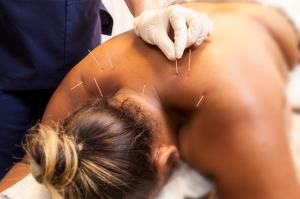Dry needling, an increasingly popular therapeutic technique, has shown promise in managing arthritic joint pain, a common ailment affecting millions worldwide. This blog post delves into the intricacies of dry needling, its application in arthritic joint pain, and the underlying mechanisms that make it an effective intervention.
Understanding Dry Needling
Dry needling, distinct from acupuncture, involves the insertion of thin, sterile needles into specific areas of the muscle, known as trigger points. These are taut, painful bands of skeletal muscle that are highly sensitive and can cause referred pain. The primary aim of dry needling is to relieve muscle pain and spasms, improve flexibility, and enhance range of motion.
Dry Needling and Arthritic Joint Pain
Arthritic joint pain, stemming from conditions like osteoarthritis and rheumatoid arthritis, is characterized by stiffness, swelling, and chronic pain in the joints. While arthritis predominantly affects the joints, it can also lead to muscle dysfunction around the affected area, contributing to the overall pain experience.
Dry needling can play a crucial role in managing this pain. By targeting trigger points in muscles surrounding the arthritic joint, it helps alleviate muscle tension and pain. This, in turn, can lead to improved joint movement and a reduction in overall discomfort.
Mechanisms of Action
The effectiveness of dry needling in treating arthritic joint pain lies in its multifaceted approach. When a needle is inserted into a trigger point, it can cause a local twitch response. This response is believed to disrupt the pain cycle, helping to reset muscle fibers to their normal length and function.
Furthermore, dry needling is thought to influence pain modulation via the central nervous system. It may stimulate the release of endorphins and other neurochemicals that play a role in pain suppression, providing a natural analgesic effect.

Evidence and Research
Numerous studies have investigated the efficacy of dry needling for arthritic joint pain. For instance, a study published in the Journal of Orthopaedic & Sports Physical Therapy found that dry needling significantly reduced pain and improved function in patients with knee osteoarthritis. Another study highlighted its effectiveness in reducing shoulder pain associated with rheumatoid arthritis.
Practical Considerations
While dry needling is a promising treatment for arthritic joint pain, it’s essential to approach it with certain considerations in mind:
- Professional Expertise: Dry needling should be performed by a trained and certified healthcare professional, such as a physical therapist or a physician.
- Safety Profile: Dry needling is generally considered safe. However, like any medical procedure, it carries risks such as minor bleeding, bruising, or temporary soreness.
- Individual Response: Not everyone responds to dry needling in the same way. It’s important to have a personalized treatment plan and realistic expectations about outcomes.
- Complementary Approach: Dry needling is most effective when used in conjunction with other treatments like physical therapy, exercise, and medication.
Conclusion
Dry needling represents a viable and effective option for managing arthritic joint pain. Its ability to alleviate muscle tension and modulate pain at a neurological level makes it an appealing choice for those seeking relief from the chronic discomfort associated with arthritis. As research continues to evolve, dry needling stands poised as a key player in the multidisciplinary approach to treating joint pain.
Research Used
In exploring the efficacy of dry needling for arthritic joint pain, particularly in osteoarthritis, a couple of significant studies provide valuable insights.
Firstly, a systematic review and meta-analysis published in the Journal of Orthopaedic & Sports Physical Therapy in 2017 examined the short- and long-term effectiveness of dry needling delivered by physical therapists for musculoskeletal pain conditions. This study, involving a thorough analysis of existing research, concluded that dry needling might decrease pain and increase pressure pain threshold compared to control/sham or other treatments in the immediate to 12-week follow-up period. However, the evidence for long-term benefits was not statistically significant. The study underscored that while dry needling could be more effective than no treatment, sham dry needling, and other treatments in reducing pain and improving pressure pain threshold in the short term, its efficacy in long-term functional outcomes compared to other physical therapy treatments was not conclusive.
Another study, focusing specifically on the effectiveness of dry needling in patients with hip or knee osteoarthritis, was conducted as a systematic review and meta-analysis. This study, published in PubMed, included seven studies involving 291 patients with osteoarthritis. It found that dry needling showed significant improvements in pain intensity and physical function in the short term. However, no differences were found in the medium- or long-term effects. The researchers concluded that while there is very low-quality evidence suggesting a positive effect of dry needling for reducing pain intensity and improving physical function in the short term for patients with osteoarthritis, further investigation is needed to determine its medium- and long-term effects.
These studies highlight that while dry needling appears to have a beneficial impact on pain intensity and physical function in the short term for individuals with osteoarthritis, its long-term efficacy and comparative effectiveness against other treatments require further research. As with any medical intervention, the application of dry needling should be tailored to individual patient needs and conducted by trained and certified professionals.

Recent Comments